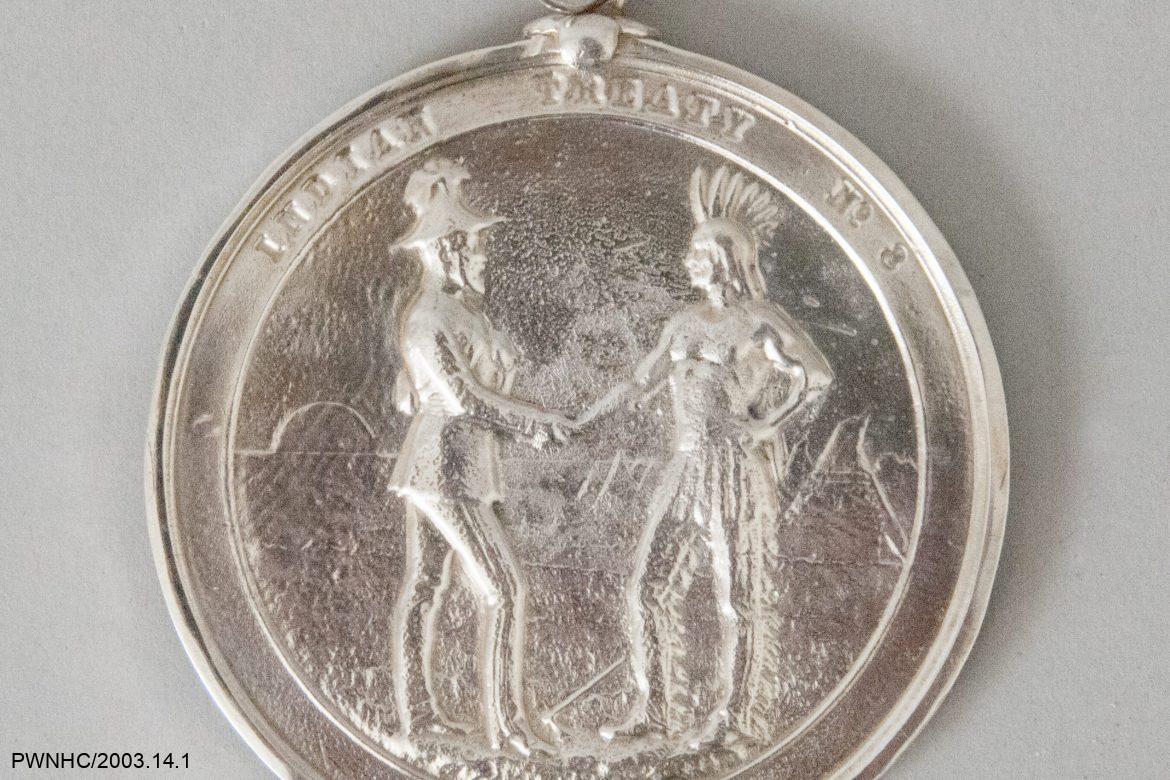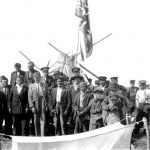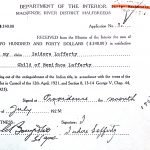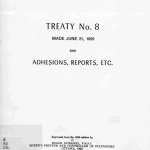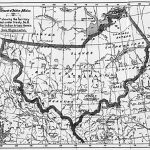1899
Treaty 8
Most land in the Northwest Territories, except for the area occupied by the Inuvialuit on the Arctic coast, lies within either Treaty 8 or Treaty 11 boundaries. First signed in June 1899, Treaty 8 embraces a region in northwestern Canada of some 840,000 square kilometres. Treaty 8 encompasses much of what is now the northern half of Alberta, the northeastern quarter of British Columbia, the northwestern corner of Saskatchewan, and the area south of Hay River and Great Slave Lake in the Northwest Territories.
The government was motivated to get First Nations to sign a treaty to have access to the area after realizing the wealth of the land, particularly in gold. As retired Indian agent James Walker wrote to Clifford Sifton, superintendent general of Indian Affairs, in November 1897, “They will be more easily dealt with now than they would be when their country is overrun with prospectors and valuable mines be discovered. They would then place a higher value on their rights.”
From the federal government’s perspective, the Dene had agreed to give up their land, or ‘extinguishment,’ for certain rights. The Dene disagree with the government’s view of extinguishment and state that they never sold their land. The Dene maintain that Treaty 8 was a peace and friendship treaty where the Dene agreed to share their land in exchange for several things, including medical care. More importantly, the Dene believed that their way of life would be protected for ‘as long as the land shall last.’
At the time, Treaty 8 was the most significant land settlement ever undertaken by the federal government. The Indigenous ancestry of the Métis of Athabasca was also deemed to have Metis land rights. The federal government intended the Treaty to extinguish Indigenous claims to the land so the region could be opened to settlement and mineral development.
Treaty 8 uniquely offered the option for Métis to be treated as Dene and join the treaty process or be offered scrip (a paper with a land payment or entitlement) using a commission set up alongside Treaty 8 negotiations. However, the Métis believed scrip was a way to extinguish rights and push families from their homes. It was used extensively in Manitoba in the 1870s, and most lands promised to Métis through scrip ended up in Canadian settlers’ hands through cash transactions or trade.
Treaty 8 negotiations involved Oblate missionaries, Dene, Métis and federal government agents. In the end, a treaty that has proven to be contentious today was signed. The Inuvialuit in the Arctic Coast area never took Treaty with the Canadian government, settling the first modern Land claim agreement in 1984.
